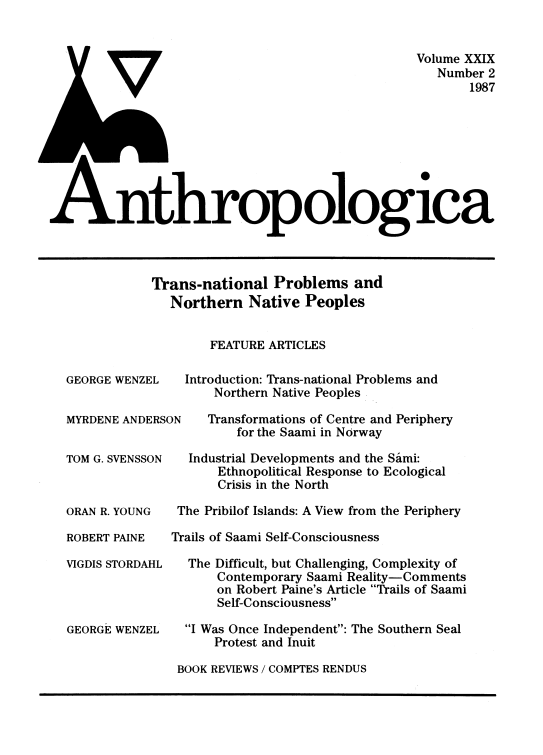The Pribilof Islands: A View from the Periphery
Abstract
Seventy-three years of federal administration of the Pribilof Islands came to an abrupt end in October 1983 when the U.S. Congress voted to terminate the mandate of the Pribilof Islands Program. To ease the ensuing transition to home rule, the U.S. Congress established a $20 million Pribilof Islands Trust. Yet reasonable estimates indicate that most of this money will go to improve the infrastructure of the islands and to rehabilitate the aging power plant, sewage systems and housing stock of the local communities to meet state codes. The Trust is wholly inadequate to launch the Pribilof communities safely on the road toward economic self-sufficiency. Motivated in part by the campaign to end the commercial harvest of northern fur seals on the Pribilof Islands, the recent federal action may also stimulate economic development, proving more harmful to the fur seal population than a modest and carefully controlled commercial harvest. The emergence of a sizeable commercial fishery based on the Pribilof Islands, for example, could easily reduce the carrying capacity of the marine ecosystem for fur seals (as well as for other marine mammals), produce a substantial incidental kill of fur seals through entanglement in fishing nets and make the coastal areas of the islands less hospitable to fur seals as rookeries.
Downloads
Publication Facts
Reviewer profiles N/A
Author statements
- Academic society
- Canadian Anthropology Society
- Publisher
- University of Victoria
Downloads
Published
How to Cite
Issue
Section
License

This work is licensed under a Creative Commons Attribution-NonCommercial 4.0 International License.
Authors contributing to Anthropologica agree to release their articles under the Creative Commons Attribution-Noncommercial 4.0 Unported license. This licence allows anyone to share their work (copy, distribute, transmit) and to adapt it for non-commercial purposes provided that appropriate attribution is given, and that in the event of reuse or distribution, the terms of this license are made clear.
Authors retain copyright of their work and grant the journal right of first publication.
Authors are able to enter into separate, additional contractual arrangements for the non-exclusive distribution of the journal's published version of the work (e.g., post it to an institutional repository or publish it in a book), with an acknowledgement of its initial publication in this journal.



